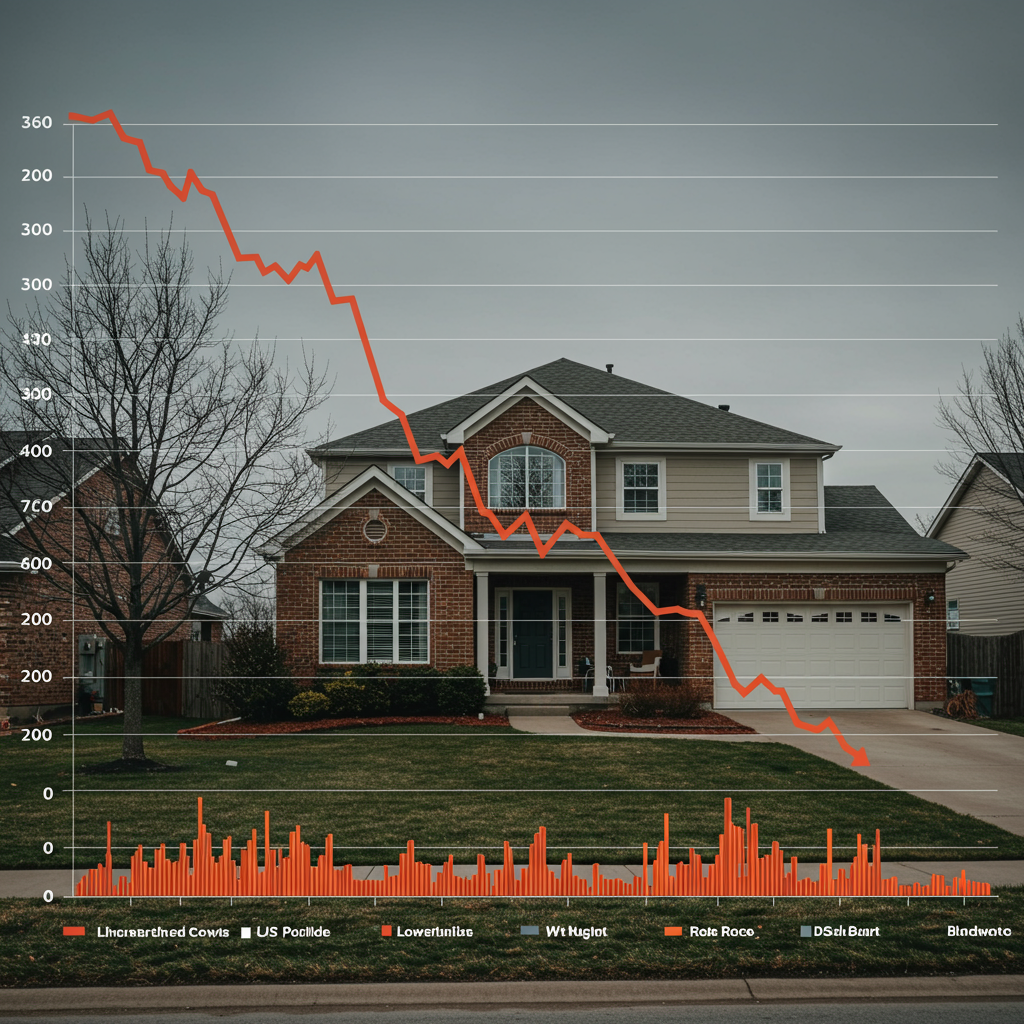The heat is coming out of the U.S. housing market, with recent data confirming that the pace of home price increases is slowing more rapidly than many expected. After years of accelerated growth fueled by low rates and high demand, a combination of rising supply and more cautious buyer activity is finally bringing prices back down to earth, or at least slowing their ascent significantly.
According to the latest S&P CoreLogic Case-Shiller Index, national home prices saw a modest 2.7% increase in April compared to the previous year. This marks a notable deceleration from the 3.4% annual gain recorded in March and represents the smallest year-over-year jump in nearly two years. While the Case-Shiller index is based on a three-month running average and is slightly backdated, other current market indicators, such as data from Parcl Labs, suggest national price levels are now essentially flat compared to a year ago.
This cooling trend isn’t uniform but is clearly impacting both the 10- and 20-city composites measured by the index, with prices moving further below their recent peaks. Interestingly, much of the minimal annual increase reflected in the April report appears to have occurred within the preceding six months, largely driven by a brief boost from the spring buying season rather than sustained growth throughout the year.
A Major Shift in Market Dynamics
One of the most striking aspects of the current slowdown is the dramatic reshuffling of regional performance. Markets that saw explosive growth during the pandemic frenzy, particularly across the Sun Belt, are now experiencing significant cooling. Cities like Tampa, Florida, and Dallas have seen outright price declines, falling 2.2% and 0.2% respectively year-over-year. San Francisco prices are largely stagnant, while Phoenix and Miami managed only modest gains just above 1%.
In stark contrast, historically stable markets in the Midwest and Northeast are now leading the pack. New York saw the strongest annual price increase at 7.9%, followed by Chicago at 6%, and Detroit at 5.5%. This shift signals a market maturing beyond speculative fever, increasingly driven by fundamental economic factors and local conditions rather than pandemic-era migration patterns. Experts note this regional rotation suggests a return to more traditional market behavior.
Why the Slowdown?
Several factors are contributing to this change in pace:
High Mortgage Rates: Elevated mortgage rates remain a significant hurdle for buyers. Rates briefly surpassed 7% in April and, while settling slightly below that mark, continue to keep potential monthly housing payments near generational highs. This significantly impacts affordability and prices out a substantial pool of potential buyers, particularly first-timers. The share of first-time buyers recently dropped to just 30% of sales, well below their historical average of 40%. While the Federal Reserve doesn’t directly control mortgage rates, its policy actions and the broader economic outlook influence yields on Treasury notes, which mortgage rates tend to follow. Persistent inflation concerns, faster-than-expected economic growth, and worries about government borrowing have all contributed to rates remaining elevated, making borrowing costs a primary driver of the current market slowdown.
Rising Supply (Gradually): The supply of homes for sale is increasing notably and is up significantly year-over-year. This expanding inventory helps ease pressure on prices. However, supply still remains below pre-pandemic levels. A major factor keeping supply constrained is the “lock-in effect,” where existing homeowners with historically low mortgage rates (many below 4% or 5%) are reluctant to sell and take on a new, much higher rate. While life events are prompting some movement, this widespread reluctance limits the number of homes hitting the market. New home construction, while improving in some areas, has faced challenges from fluctuating builder sentiment, rising material costs potentially exacerbated by tariffs, and a long-term decline in single-family building since the Great Recession, contributing to a national housing deficit.
- Softening Demand: Beyond affordability issues, broader economic signals also suggest a potential softening in domestic demand. Recent retail sales data showed a decline, and while core sales remain modest, factors like a potentially slowing labor market, the resumption of student loan payments for millions, and household savings levels returning closer to normal could weigh on consumer spending, indirectly impacting housing demand.
- www.bankrate.com
- www.forbes.com
- www.businessinsider.com
- www.theglobeandmail.com
- www.deloitte.com
Not a Repeat of 2008
Despite the weakening in price growth, the market is not currently at risk of the kind of major declines seen after the 2008 financial crisis. The fundamental difference lies in the supply picture and homeowner equity. Unlike the oversupply during the housing bubble, the current market still grapples with limited inventory. Furthermore, homeowners today hold near-record levels of equity in their properties. Over 46% of mortgaged homes were considered “equity-rich” in early 2025, providing a significant buffer. This high equity position allows distressed homeowners to potentially sell or leverage their property to avoid foreclosure, keeping distressed sales low compared to historical norms and preventing a flood of inventory that could trigger widespread price drops.
Looking ahead, most experts forecast that national home prices will continue to appreciate through 2025, albeit at a much slower pace than recently observed – potentially ranging from just over 1% to around 3.5% nationally for the year. While affordability remains a major hurdle, and conditions vary significantly by region, the persistent supply constraints continue to provide a floor for prices, preventing the sharp corrections some had predicted. The market’s trajectory will heavily depend on future movements in mortgage rates, changes in housing inventory, and the broader economic climate.



